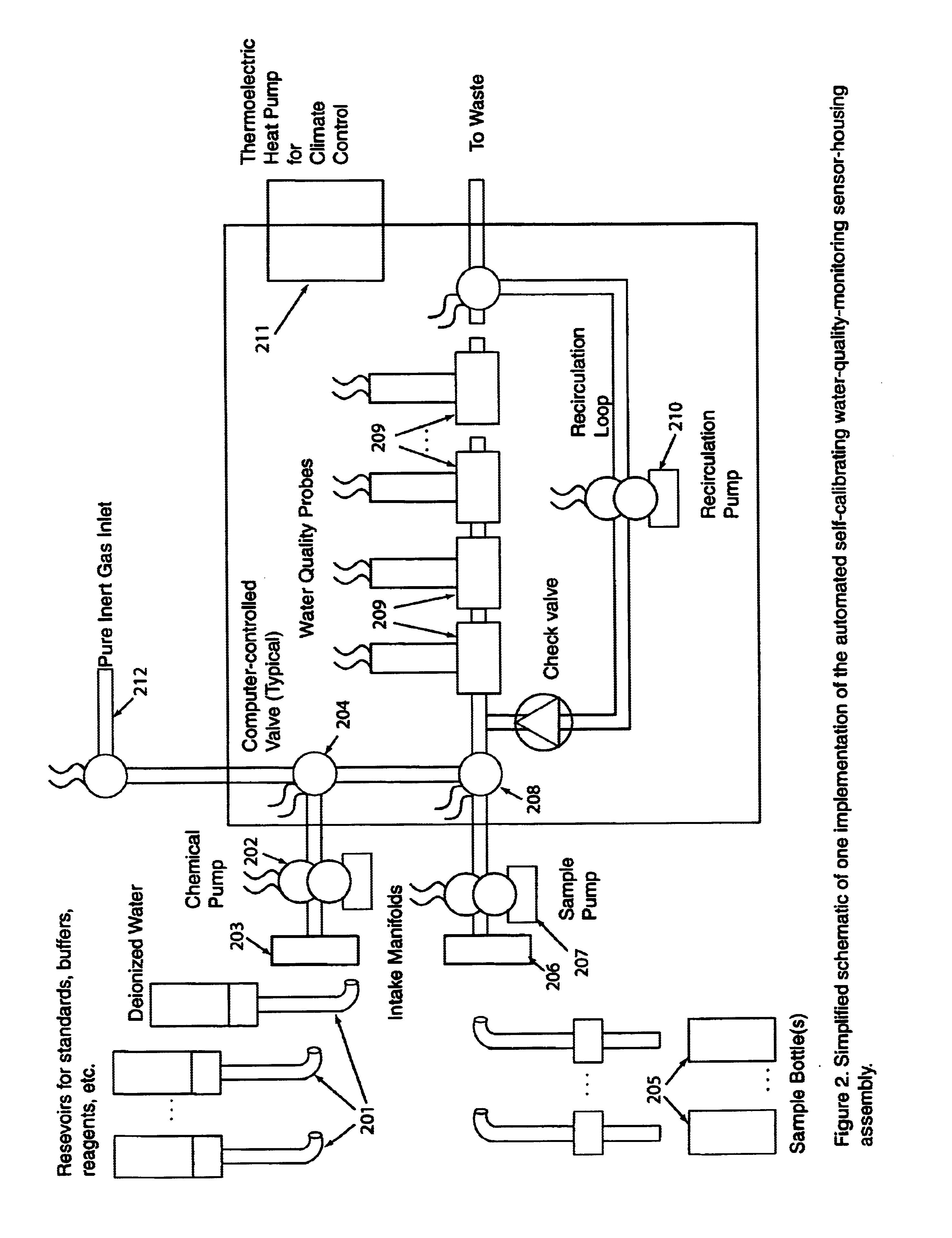Automated self-calibrating water quality monitoring sensor housing assembly
- Summary
- Abstract
- Description
- Claims
- Application Information
AI Technical Summary
Benefits of technology
Problems solved by technology
Method used
Image
Examples
Embodiment Construction
[0028]The automated self-calibrating water quality monitoring sensor housing assembly of the present invention is designed to facilitate analysis of one or more samples for a number of major consistuents. Upon activation, the device and process perform the following steps:
[0029]1. Rinse the system with fluids such as deionized water and gas-purge the system;
[0030]2. Activate the system and perform diagnostic checks;
[0031]3. Introduce a series of standard reference solutions for each water quality monitoring probe and rinse the system between calibrations as appropriate;
[0032]4. Calculate the slope and intercept of each probe using data from appropriate standard solutions;
[0033]5. Notify the operator using data from a control panel indicator and / or a message transmitted by the computer controller using a voice modem and / or appropriate electronic mail software if the operational parameters of the probes do not meed prespecified criteria.
[0034]Probe readings can be easily displayed usi...
PUM
 Login to View More
Login to View More Abstract
Description
Claims
Application Information
 Login to View More
Login to View More - R&D
- Intellectual Property
- Life Sciences
- Materials
- Tech Scout
- Unparalleled Data Quality
- Higher Quality Content
- 60% Fewer Hallucinations
Browse by: Latest US Patents, China's latest patents, Technical Efficacy Thesaurus, Application Domain, Technology Topic, Popular Technical Reports.
© 2025 PatSnap. All rights reserved.Legal|Privacy policy|Modern Slavery Act Transparency Statement|Sitemap|About US| Contact US: help@patsnap.com



